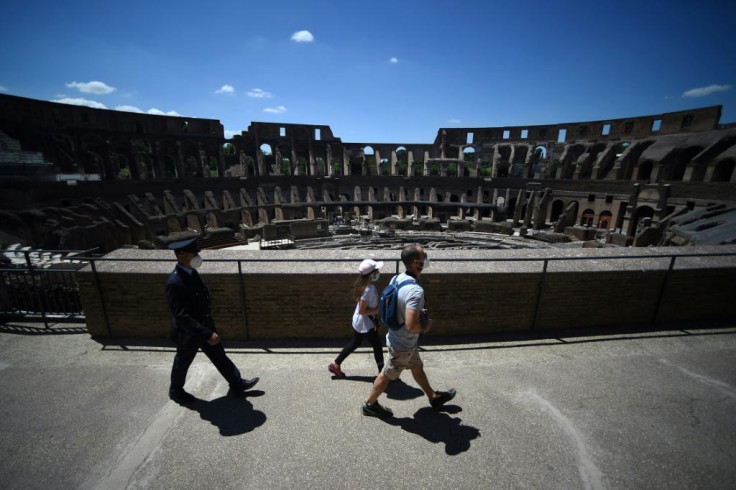Summer travel warning as Italy puts 23 major cities on red alert due to heatwave
Italian islands of Sardinia and Sicily are expected to be the hottest

Italy has reportedly slapped nearly all its major cities with a red alert as the heatwave continues to bite Southern Europe.
As temperatures are expected to go up to 46 degrees in the coming days, Italy has put around 23 cities on red alert, including Rome. This is also giving way to warnings about an increased risk of deaths and heart attacks, according to RTE.
Europe is also experiencing wildfires across the continent, including Greece and the Swiss Alps. The scorching temperatures of the heatwave are affecting millions of people in the northern hemisphere. It is being caused by a high pressure system bringing warmer, tropical air, south of a jet stream currently stuck over central Europe.
Which cities in Italy have issued red alert?
On Tuesday, Ancona, Bologna, Bolzano, Brescia, Cagliari, Campobasso, Florence, Frosinone, Latina, Messina, Naples, Palermo, Perugia, Pescara, Rieti, Rome, Trieste, Venice, Verona, and Viterbo were all placed on red alert. The following day, Bari, Catania, Civitavecchia, and Turin were added to the list.
Some parts of the Italian islands of Sardinia and Sicily will be the hottest again, with highs of around 46C or 47C, reported BBC Weather.
Sicily, several buildings are not well equipped to deal with temperatures this high. Lots of families live on the ground floor in apartments with very few windows. And here, it is quite common for large families to live together in small spaces.
Deaths in Italy due to heatwave
On Tuesday, a man and a woman aged 69 were found dead in their homes in the Sicilian capital Palermo, with several local newspapers attributing their deaths to the heat. In the south of Italy, which is poorer than the north, many cannot afford fans, let alone air conditioning. The heat is mainly rough on homeless people.
Sicily has also been experiencing a lot of power cuts as a result of high demand for air conditioning.
Meanwhile, the health ministry announced it would activate an information hotline and teams of mobile health workers visited the elderly in Rome. "These people are afraid they won't make it, they are afraid they can't go out," said Claudio Consoli, a doctor and director of a health unit.
Palermo has a Catholic charity called Caritas, which offers a shower service and homeless shelters. Sergio Ciresi, who is a priest and runs the charity, said the heat was "making people more impatient and short-tempered".
"In the last few days we noticed people getting angry a lot more easily, and starting fights with each other," said Ciresi.
Meanwhile, the Italian health ministry has asked emergency rooms across the country to activate so-called "heat codes", allocating a separate group of medical staff to treat people who come in with symptoms caused by the heat.
Similar measures were brought in at the start of 2020, when Italy became the epicentre of the Covid pandemic in Europe.
The health ministry has also claimed that there has been a 20% increase in the number of patients being admitted with heat-related symptoms.
Is it safe to travel to Italy this summer?
While there are no official restrictions on Italy travel, tourists are being warned about the dire situation in the country which is quite a popular holiday destination in the summer.
It is also understood that Italy has shut down some popular attractions during the heatwave to keep tourists safe, especially after some tourists recently suffered fainting spells.
During the hottest part of the day, Italy is planning to restrict entry to some historical monuments, after a British tourist fainted at the Colosseum in Rome.
The foremost risks of heat are dehydration and overheating. These are a greater threat to people who are more vulnerable, such as older people, babies, and people with prevailing heart and breathing conditions. But locals and tourists in Italy – no matter how healthy – have been urged to avoid direct sunlight between 11 am and 6 pm.
© Copyright IBTimes 2025. All rights reserved.






















